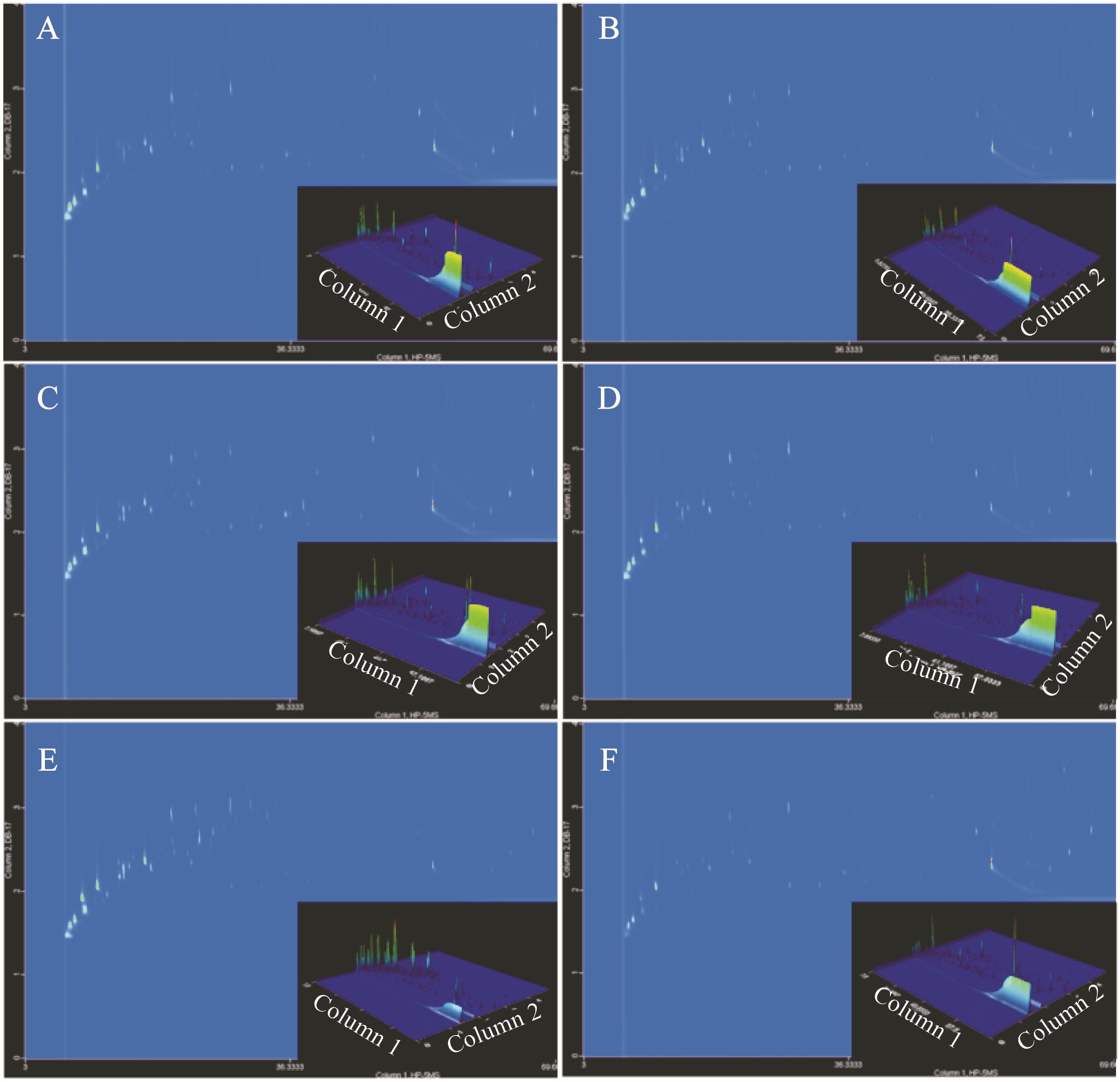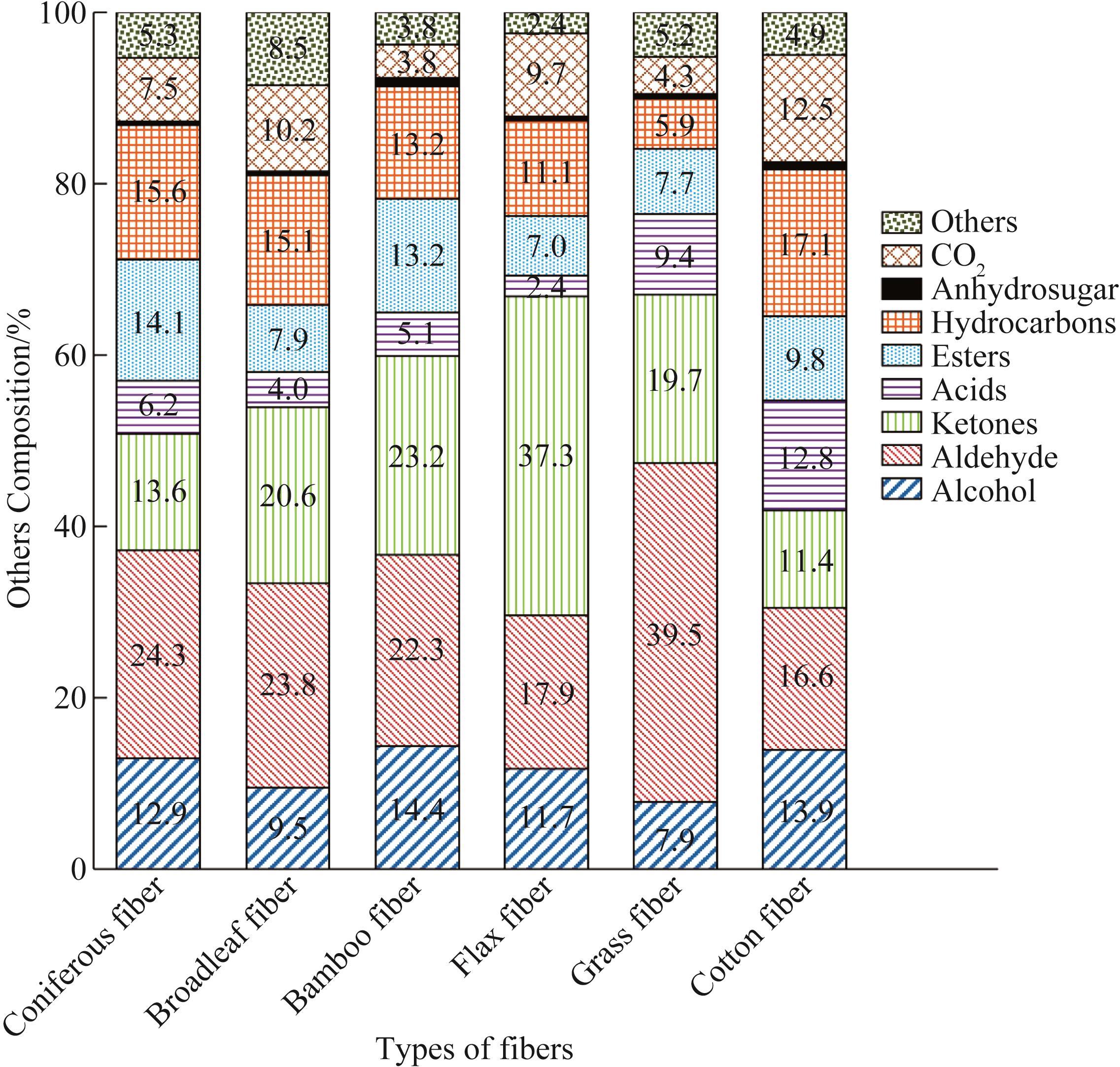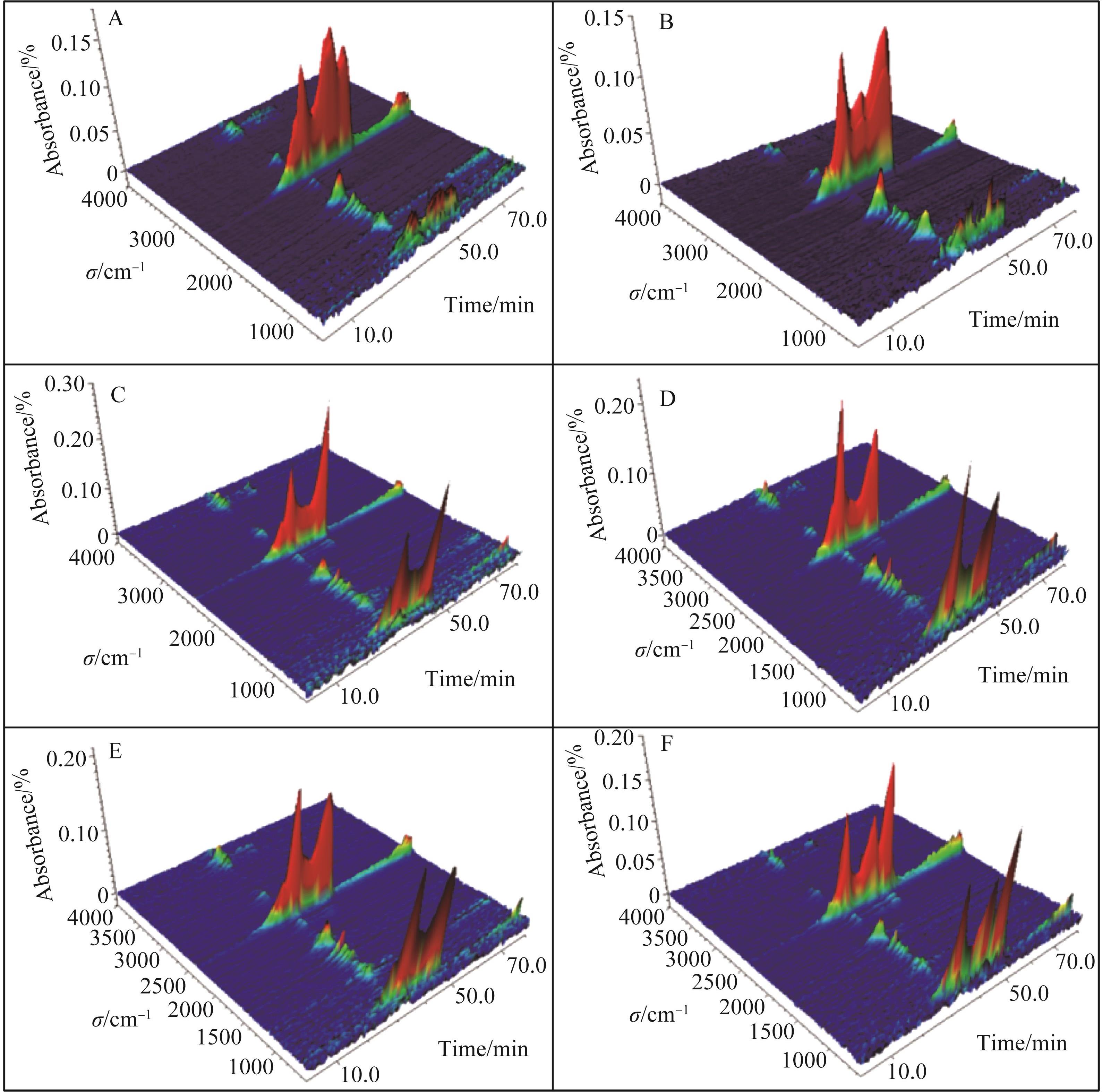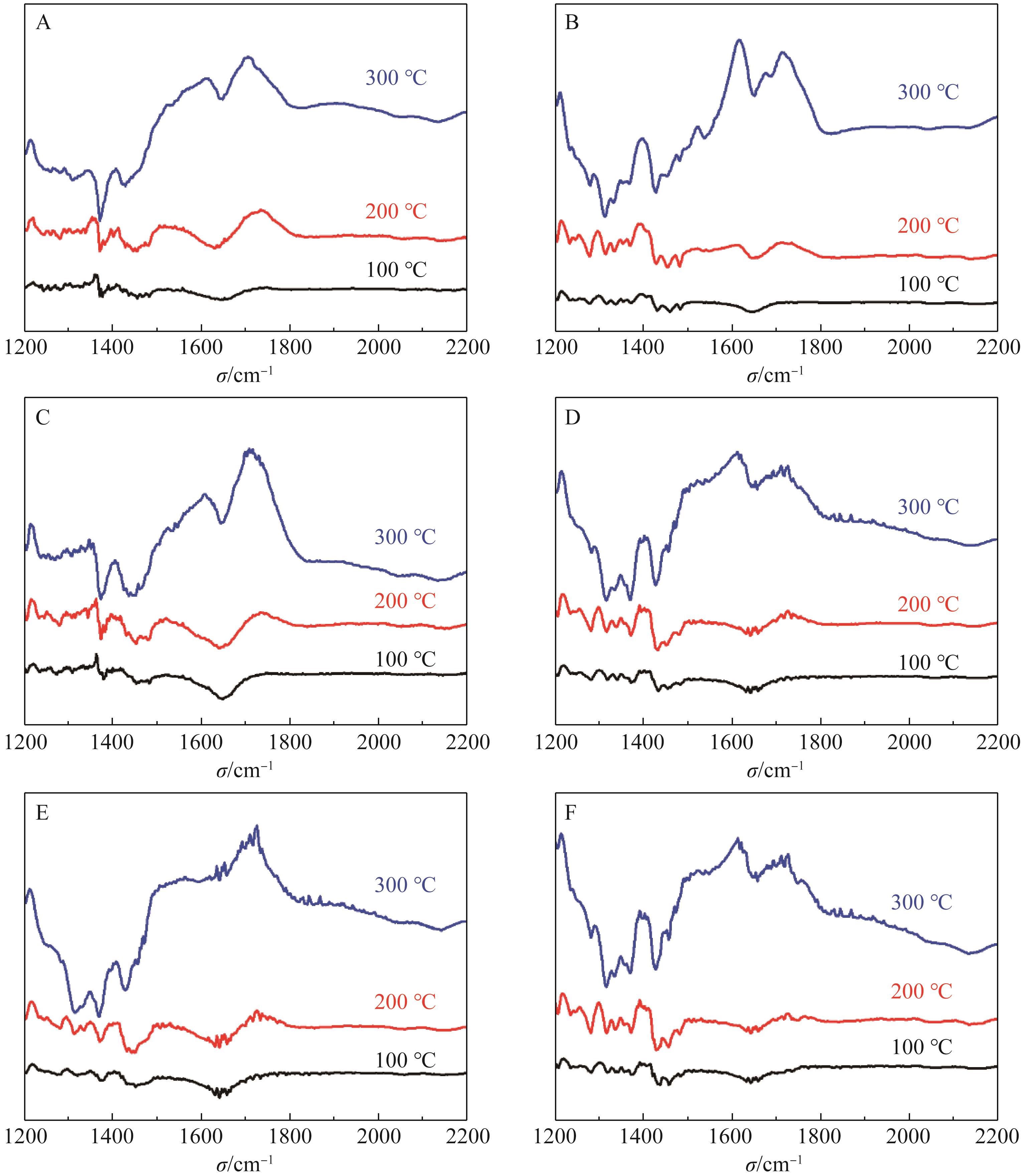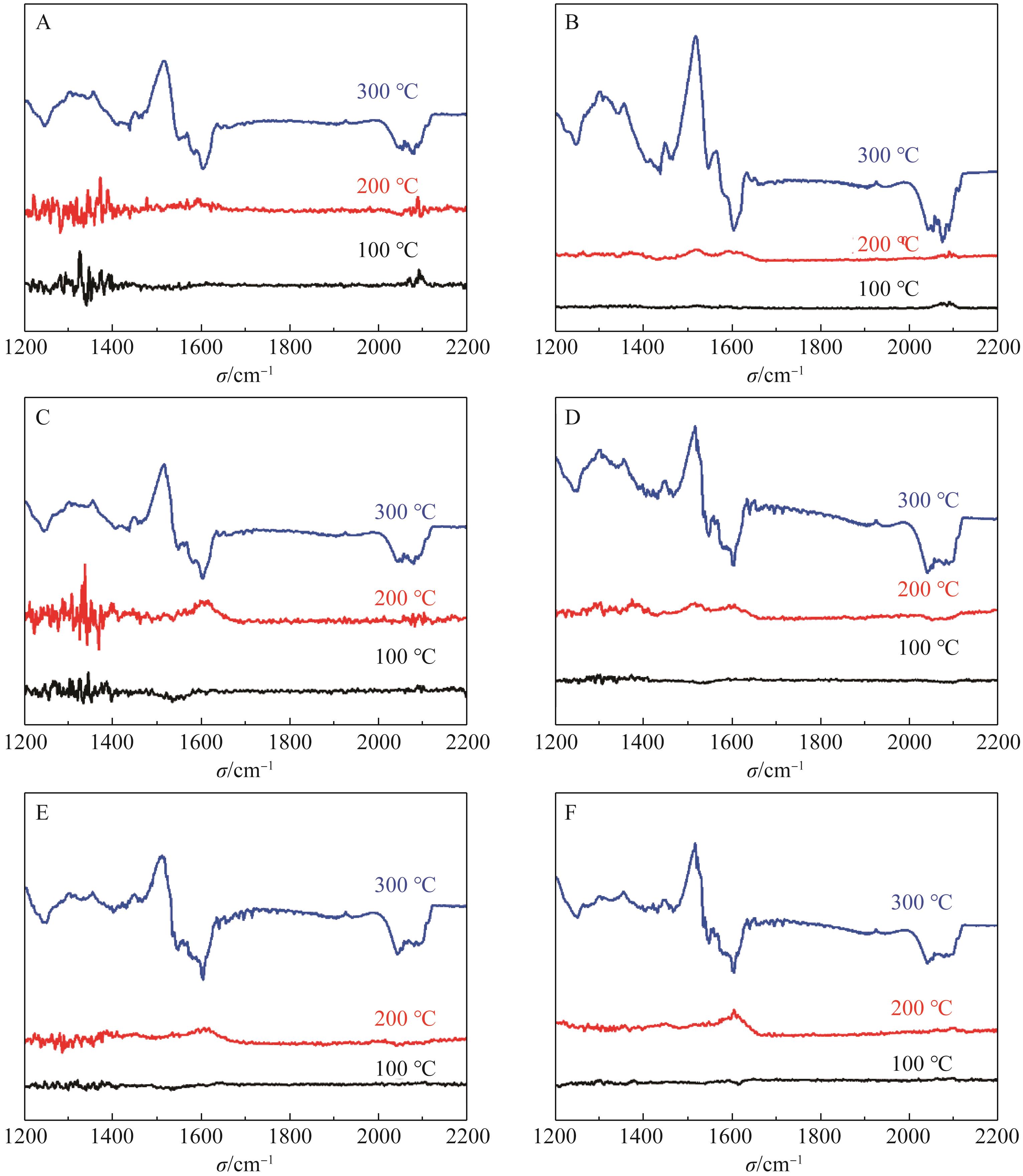
应用化学 ›› 2022, Vol. 39 ›› Issue (7): 1073-1082.DOI: 10.19894/j.issn.1000-0518.210227
植物纤维的热裂解过程
郑泉兴1, 李巧灵1, 张柯2, 周培琛1, 刘江生1, 刘秀彩1, 黄朝章1, 李斌2, 许寒春1, 蓝洪桥1, 刘加增1, 马鹏飞1, 谢卫1( ), 伊晓东3(
), 伊晓东3( )
)
- 1.福建中烟工业有限责任公司技术中心,厦门 361021
2.中国烟草总公司郑州烟草研究院,河南 450001
3.厦门大学化学化工学院,厦门 361005
Pyrolysis Process of Plant Fibers
Quan-Xing ZHENG1, Qiao-Ling LI1, Ke ZHANG2, Pei-Chen ZHOU1, Jiang-Sheng LIU1, Xiu-Cai LIU1, Chao-Zhang HUANG1, Bin LI2, Han-Chun XU1, Hong-Qiao LAN1, Jia-Zeng LIU1, Peng-Fei MA1, Wei XIE1( ), Xiao-Dong YI3(
), Xiao-Dong YI3( )
)
- 1.Technology Center,China Tobacco Fujian Industrial Co. ,Ltd. ,Xiamen 361021,China
2.Zhengzhou Tobacco Research Institute of CNTC,Zhengzhou 450001,China
3.College of Chemistry and Chemical Engineering,Xiamen University,Xiamen 361005,China
摘要:
天然植物纤维的相对分子质量大且结构、成分复杂,因此导致其热裂解的产物种类和成分分布也较为复杂。通过快速热解-全二维气相色谱-飞行时间质谱(Py-GC×GC-TOF/MS),热重-红外(TG-FT-IR)联用和原位红外(in situ FT-IR)等技术手段研究了6种不同天然纤维的热裂解过程,分别对不同纤维种类的热裂解温度、产物分布和主要产物类型进行了充分的研究和讨论。 研究结果表明,纤维热解产物主要包括醇、醛、酮、酸、酯、碳氢化合物、脱水糖和CO2等,不同天然植物纤维的热裂解产物种类差异性明显,得到的主要产物类型均有所不同。 同时,原位红外光谱和时间质谱结果表明,热解产物与热解温度密切相关。 原位红外实验结果表明,当热解温度低于100 ℃时,纤维结构表面的吸附水发生脱附,但是纤维结构不发生明显变化,当热解温度区间在100~200 ℃时,温度对裂解过程影响不大,而当温度超过300 ℃以后,纤维热解反应加剧且表面结构发生明显变化,产物主要有醛和酮。
中图分类号:
